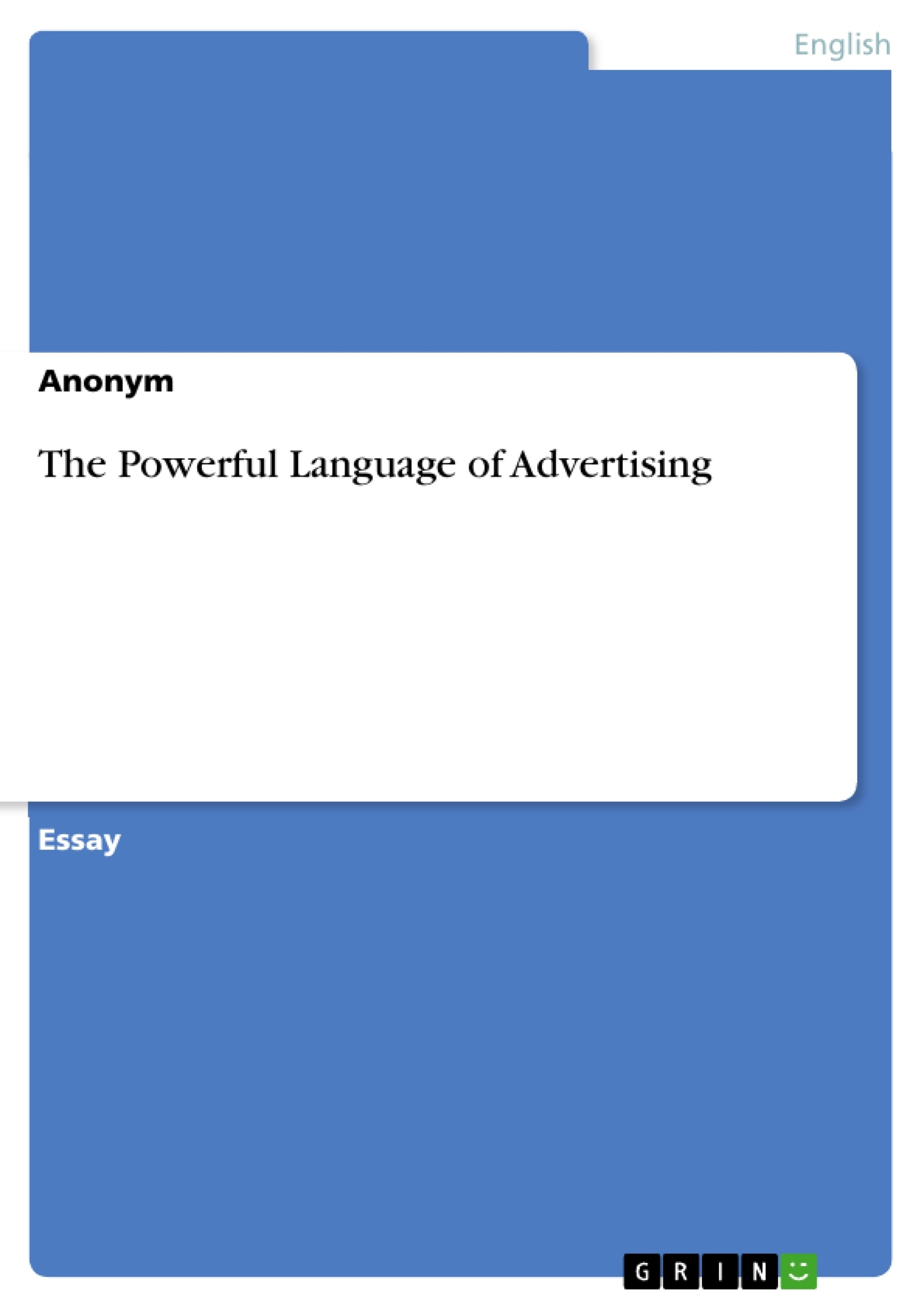Have you ever wondered why advertisements arouse your desire for a seemingly unique and innovative product in a way which makes you necessarily buy it, just to realize later that you actually have no use for it and had better saved the money for something more utilitarian and functional? The effect of advertising can be subsumed under the acronym ‘AIDA’, which stands for attention, interest, desire, and action, a phase model of advertising effect. According to this model, the arousal of attention, interest, and desire culminates in the successful buying of the product being advertized. In this vein, advertising makes use of several advertising techniques, among them the most powerful manipulative means – language – as the title of Dwight Bolinger’s book Language: The Loaded Weapon (1980) suggests. The language of advertising is a powerful, highly elaborate, and in its creation time-consuming product, which manifests itself in three major linguistic areas, namely vocabulary, syntax, and rhetorical figures.
Table of Contents
- The Powerful Language of Advertising
- Vocabulary
- Syntax
- Rhetorical Figures
Objectives and Key Themes
This text examines the persuasive power of advertising language and how it influences consumer behavior. It aims to analyze the various techniques employed by advertisers to manipulate customers into purchasing products they may not actually need.
- The use of vocabulary, including "trigger words" and euphemisms, to evoke positive emotions and desires in consumers.
- The importance of syntax, particularly the use of short, simple sentences and incomplete phrases, in capturing attention and increasing understandability.
- The role of rhetorical figures, such as ellipses, parallelism, alliteration, and puns, in enhancing memorability and creating a lasting impact on the audience.
- The relationship between advertising language and consumer psychology, highlighting the vulnerability of consumers to manipulation.
- Strategies for resisting the persuasive power of advertising language.
Chapter Summaries
The text explores the three main areas of advertising language: vocabulary, syntax, and rhetorical figures. It argues that the choice of vocabulary is crucial for success, highlighting the use of positive adjectives and adverbs, superlatives, and everyday language to appeal to a wide audience. The text emphasizes the effectiveness of short, simple sentences and incomplete phrases in enhancing understandability and attracting the reader's attention. Finally, the text analyzes the role of rhetorical figures, such as ellipses, parallelism, and puns, in reinforcing memorability and enhancing the persuasive power of advertising language.
Keywords
The primary focus of this text is on the manipulative power of advertising language. Key terms and concepts include trigger words, euphemisms, syntax, rhetorical figures, ellipses, parallelism, alliteration, puns, and the AIDA model of advertising effect. The text explores the relationship between advertising language and consumer psychology, aiming to provide insights into the strategies used by advertisers to manipulate consumer behavior.
- Quote paper
- Anonym (Author), 2010, The Powerful Language of Advertising, Munich, GRIN Verlag, https://www.grin.com/document/1360405



